Arch Iran Med. 25(3):196-200.
doi: 10.34172/aim.2022.34
History of Contemporary Medicine in Iran
Professor Abdulkarim Vessal (1933-2022) and His Role in Promotion of Radiology and Medical Journalism in Iran
Mohammad Hossein Azizi 1, *, Moslem Bahadori 1
Author information:
1Academy of Medical Sciences of Iran, Tehran, Iran
*Corresponding Author: Mohammad Hossein Azizi, Associate Professor of Otolaryngology, Academy of Medical Sciences of Iran, Tehran, Iran. Tel:+98 21 229398, Fax:+98 21 229398, E-mail:
mhazizi.ent@gmail.com
Abstract
Abdulkarim Vessal, a distinguished professor of the Shiraz School of Medicine, was the founder of the "Archives of Iranian Medicine Journal" and a permanent member of the "Iranian Academy of Medical Sciences", who finally, after five decades of efforts to promote radiology and medical journalism in Iran, passed away on February 18, 2022 in Shiraz. His demise is a great loss for the Iranian medical community, especially in Shiraz. In the present paper, his life and career are briefly reviewed.
Keywords:
Copyright and License Information
© 2022 The Author(s).
This is an open-access article distributed under the terms of the Creative Commons Attribution License (
https://creativecommons.org/licenses/by/4.0), which permits unrestricted use, distribution, and reproduction in any medium, provided the original work is properly cited.
Cite this article as: Azizi MH, Bahadori M. Professor Abdulkarim Vessal (1933-2022) and His Role in Promotion of Radiology and Medical Journalism in Iran. Arch Iran Med. 2022;25(3):196-200. doi: 10.34172/aim.2022.34
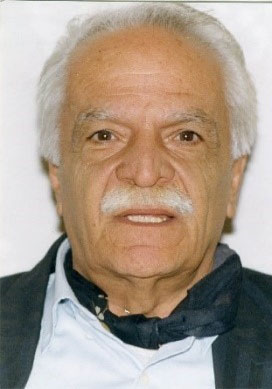
.
Professor Abdulkarim Vessal (1933-2022)
Professor Abdulkarim Vessal (1933-2022)
“…The essence of a person’s life is the product of his environment and personal interest. I had a good environment and my interest and perseverance also helped.” (Part of an interview with Sepid Newspaper, 2016)
Abdulkarim Vessal was born in Shiraz in April 1931, and grew up in a cultured family with a known history of about four hundred years. His father, Ali Rouhani Vessal (1879-1959), was a poet and calligrapher who wrote a book entitled “Golshan Vessal” on his family’s literary works1(Figures 1 and 2).
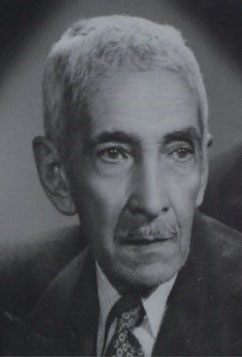
Figure 1.
Ali Rouhani Vessal (1879-1959), Professor Vessal’s Father.
.
Ali Rouhani Vessal (1879-1959), Professor Vessal’s Father.
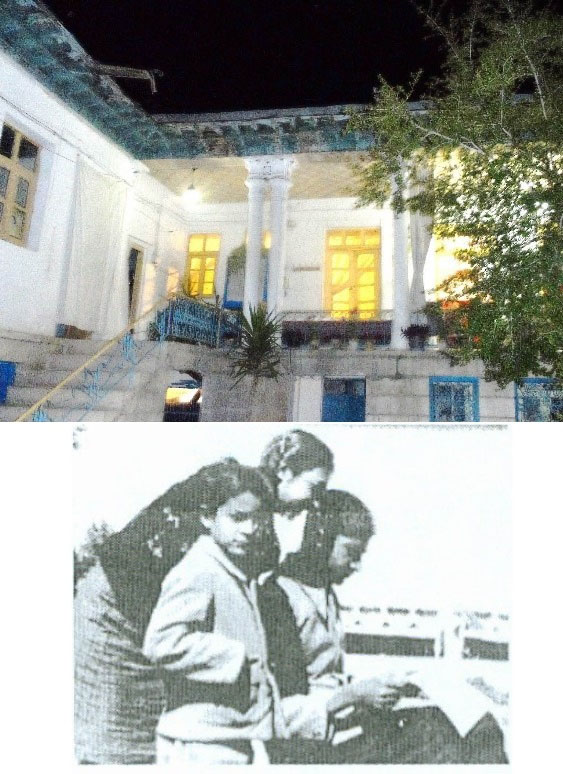
Figure 2.
Up: Professor Vessal’s father’s house, with architecture in the style of the first Pahlavi Period (Photo by the author). Down: Professor Vessal in childhood (standing in front) with his older brother and sister (Source: Dr. Abdulwahhab Nourani Vessal’s book).
.
Up: Professor Vessal’s father’s house, with architecture in the style of the first Pahlavi Period (Photo by the author). Down: Professor Vessal in childhood (standing in front) with his older brother and sister (Source: Dr. Abdulwahhab Nourani Vessal’s book).
Ali Rouhani Vessal was the eldest son of Abdulwahhab Yazdani, the sixth son of “Vessal Shirazi”. Vessal Shirazi was a famous poet of the thirteenth century A.H. Today, two streets in Shiraz and Tehran are named after “Vessal Shirazi”. Vessal Shirazi had six sons who, like their father, were known figures in the field of literature and art. Edward Brown (1862-1926), the English physician and orientalist, states in his book “Literary History of Iran” that during his visit to Shiraz 134 years ago, i.e. in spring 1888, he met some members of the Vessal family, including Yazdani2 who was the grandfather of Professor Vessal.
After completing his primary training at the Ibn Sina School in Shiraz and his secondary education at Rahnama High School in Tehran, Abdulkarim finished the high school in 1952 and continued his studies in medicine in Germany and received his MD degree from the University of Munich in 19573 (Figure 3).
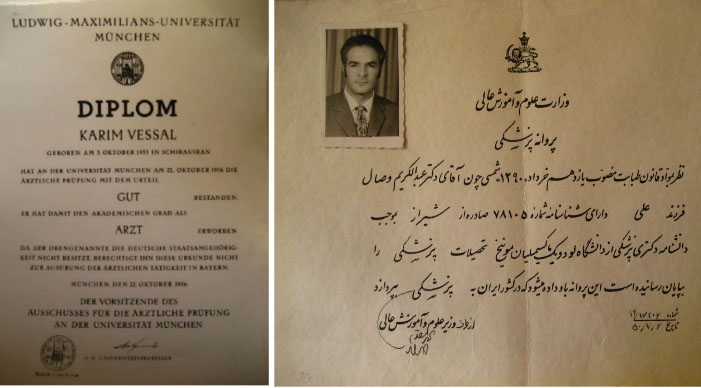
Figure 3.
Professor Vessal’s MD diploma from the Ludwig Maximilian University of Munich, Germany, 1957 and its Persian approval by the Iranian Ministry of Sciences and Higher Education.
.
Professor Vessal’s MD diploma from the Ludwig Maximilian University of Munich, Germany, 1957 and its Persian approval by the Iranian Ministry of Sciences and Higher Education.
He was highly interested in basic sciences; hence, in 1961, he completed a bachelor’s course in physics at the University of Berlin. In due course, the young Dr. Vessal studied radiology at the University of Berlin and received his board certification in 1965. Afterwards, he went to England for a while, and eventually, after about thirteen years away from home, returned to Iran to initiate his scientific services in the field of radiology. On his return, Dr. Vessal joined the Medical School of Shiraz University and after passing military service education (Figure 4), in 1969, he became an associate professor and head of the radiology department at the Shiraz Medical School.3
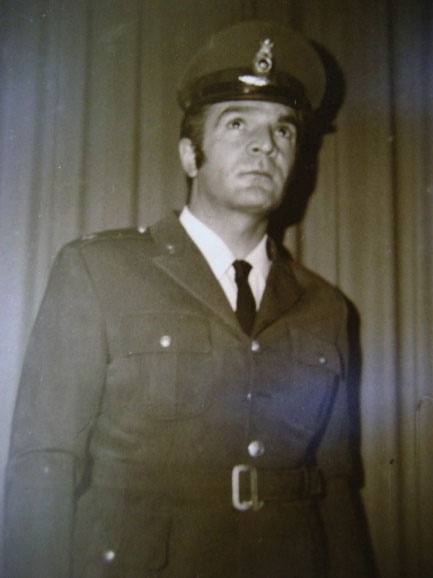
Figure 4.
During Military Education.
.
During Military Education.
At that time, Dr. Vessal went to the United States and continued his training in the radiology departments of Johns Hopkins University and Vanderbilt University and then came back to Shiraz. In 1976, he became full professor, a position he held until his retirement in 2002. He was a member of the” Examination Board of the Radiology”. He also wrote the first comprehensive Persian book called “Nuclear Medicine” which was published by the Shiraz University Press. Later, he founded the “Radiation Science Research Center at the Shiraz University of Medical Sciences.3
Professor Vessal was a prolific writer who authored Persian, English and German scientific articles and published them in reputable medical journals. His 46 articles are indexed on the PubMed database. His oldest paper on the PubMed published in the Clinical Radiobiology Journal dates back to October 1975. Professor Vessal had a special interest in the history of science and in particular, the history of medicine in the world and Iran. The following are a few examples of his inquiries:
Jorjani (1042-1137). Zarshenas MM, Zargaran A, Abolhassanzadeh Z, Vessal K.
J Neurol. 2012: 259(12):2764-5.
Mansour Haghshenas, MD. Vessal K, Habibzadeh F, and Malekzadeh R. Arch Iran Med. 2015; 18(8):560.
Haly Abbas (949-982 AD).Zargaran A, Zarshenas MM, Ahmadi SA, Vessal K.
J Neurol. 2013: 260(8):2196-7.
Traditional medicine: a historical appraisal. Vessal K.Arch Iran Med. 2013; 16(12):696.
Development of radiology in Iran. Vessal K, Rad S, Alizadeh A, Jalal-Shokouhi J.
Arch Iran Med. 2009; 12(6):611-6.
Professor Werner Dutz (1928 - 1984).Vessal K, Saidi F. Arch Iran Med. 2008 Mar; 11(2):235-7.
From Rete Mirabile to Willis’ circle, historical progress of medicine. Zargaran A, Vessal K. Int J Cardiol. 2013 15; 168(6):e154.
In addition to his educational and research efforts, Professor Vessal attended several important international and domestic scientific conferences and delivered lectures (Figure 5).
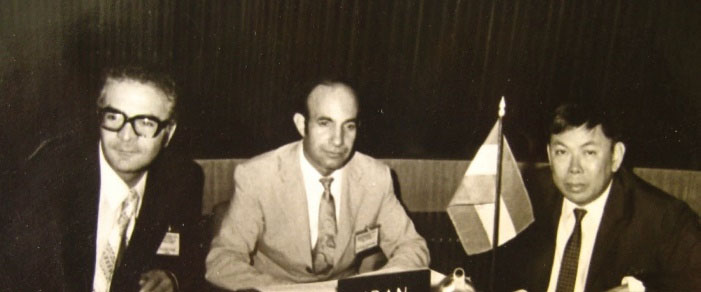
Figure 5.
Professor Dr. Vessal (first on the left), at a Meeting of Nuclear Medicine Scientists from Nine Asian Countries, the Philippines, November 15, 1971.
.
Professor Dr. Vessal (first on the left), at a Meeting of Nuclear Medicine Scientists from Nine Asian Countries, the Philippines, November 15, 1971.
In 1970, he established a prestigious English medical journal at the Faculty of Medicine of Shiraz University, which was indexed in “Medicus Index”.3 He was the chief editor of that journal for around 20 years (Figure 6).
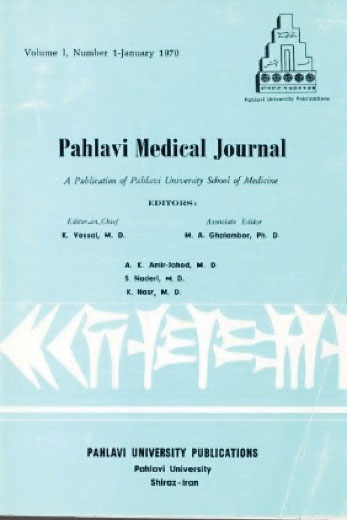
Figure 6.
The First Issue of the English Journal of Shiraz University School of Medicine, 1970 (Courtesy Dr. Bahram Azadeh, a former professor of pathology at the Shiraz University School of Medicine).
.
The First Issue of the English Journal of Shiraz University School of Medicine, 1970 (Courtesy Dr. Bahram Azadeh, a former professor of pathology at the Shiraz University School of Medicine).
For years, Professor Vessal, as an active editor, peer reviewer or author, served as a supporter of development of medical journalism in Iran. For his significant services and vast knowledge in 1992, he was elected as a “Permanent Member of the Iranian Academy of Medical Sciences”3 (Figure 7).

Figure 7.
Permanent Membership of the Iranian Academy of Medical Sciences. 1992.
.
Permanent Membership of the Iranian Academy of Medical Sciences. 1992.
In 2007, Professor Vessal was elected by the members of the Academy of Medical Sciences as the “Selected Person of the Year” and a book was published in his honor in 20084 (Figure 8).
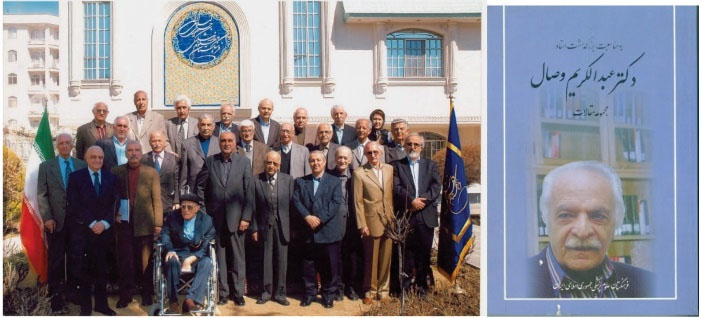
Figure 8.
Left: Professor Vessal and Some of his Colleagues at the Academy of Medical Sciences, 1980s. Right: the front cover of book in honor of Dr. Abdulkarim Vessal published by the Academy of Medical Sciences, 2008.
.
Left: Professor Vessal and Some of his Colleagues at the Academy of Medical Sciences, 1980s. Right: the front cover of book in honor of Dr. Abdulkarim Vessal published by the Academy of Medical Sciences, 2008.
Around 24 years ago, in October 1998, Professor Vessal and his colleagues established an English journal entitled “Archives of Iranian Medicine”, at the Academy of Medical Sciences which was the first Iranian medical scientific periodical which was later in 2006 indexed in the PubMed database4 (Figure 9). Then, in 2001, Professor Vessal and his radiologist colleagues founded the third medical journal in English entitled “Iranian Journal of Radiology”.3
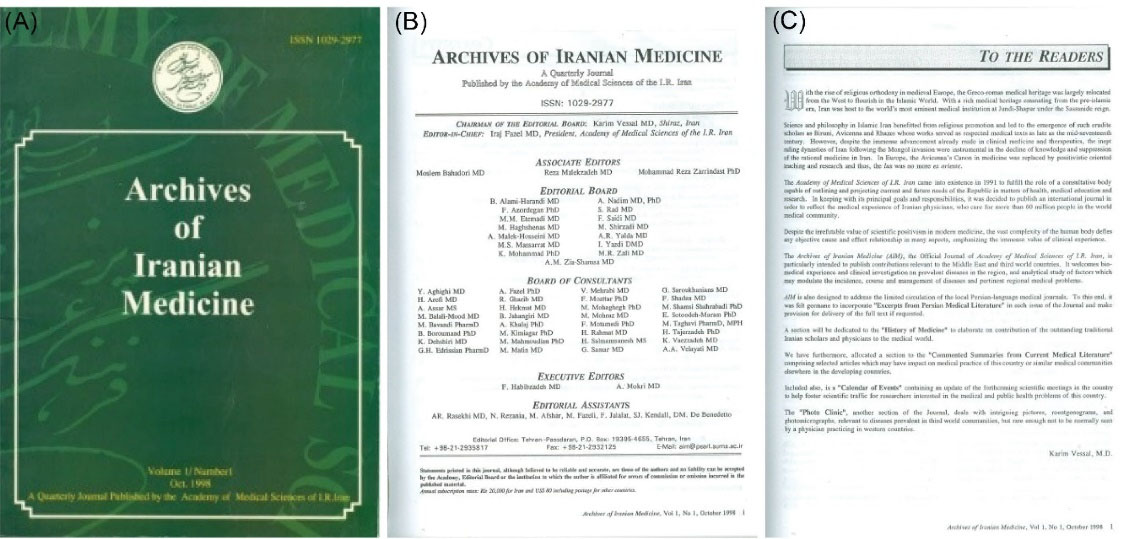
Figure 9.
(A) The front cover the first issue of the “Archives of Iranian Medicine” Journal, 1998. (B) The editorial team and (C) To the readers, written by Professor Vessal.
.
(A) The front cover the first issue of the “Archives of Iranian Medicine” Journal, 1998. (B) The editorial team and (C) To the readers, written by Professor Vessal.
Another important achievement of Professor Vessal was his role in setting up the Dr. Nourani Vessal Museum in Shiraz. In March 2014, a part of an endowment with an area of five thousand square meters, including a garden and a building on the Qasr-e Dasht Street in Shiraz, belonging to Dr. Abdulwahhab Nourani Vessal (1923-1994), who was a poet, literary researcher and professor at the Faculty of Literature of Shiraz University and Professor Abdulkarim’s brother, was devoted to the Shiraz University of Medical Sciences. This valuable accomplishment was carried out according to the will of Dr. Nourani Vessal and with the support of the heirs and the continuous pursuit of Professor Vessal, and finally, the garden and mansion became a cultural place and museum. At the opening ceremony of the cultural complex of Dr. Nourani Vessal, Professor Vessal stated, “It is hoped that this cultural center, as the goal of the late Nourani Vessal, will be a foundation for scientific and cultural meetings and a platform for scientists, and a center for the preservation of scientific and cultural works, especially in the field of medical sciences”. The mansion in Dr. Nourani Vessal’s garden includes large and beautiful halls. The wooden latticed windows with beautiful stained glass in this mansion date back to the Zand dynasty. In addition to the garden and mansion, there are antiques, historical and ancient objects, exquisite works of art, sculptures and paintings (including a painting attributed to Kamal al-Molk, the famous Iranian painter) and the personal library collected by the late Dr. Nourani Vessal, with four thousand volumes of his exquisite books and personal items.
Professor Abdulkarim Vessal was a true scholar and book lover. He was fluent in English, German and French and was familiar with Latin. For his long-life scientific services, he was awarded several honors, including the “Gold Medal of the Iranian Congress of Radiology” in 2009, as well as the “First Rank National Medal of Knowledge” in 2011. He also compiled the poems and articles written by his older brother, Abdulwahhab Nourani Vessal which was published in 2014.4 Mohammad Ibrahim Bastani Parizi, the well-known professor of history has written a remarkable introduction to that book3 (Figure 10).
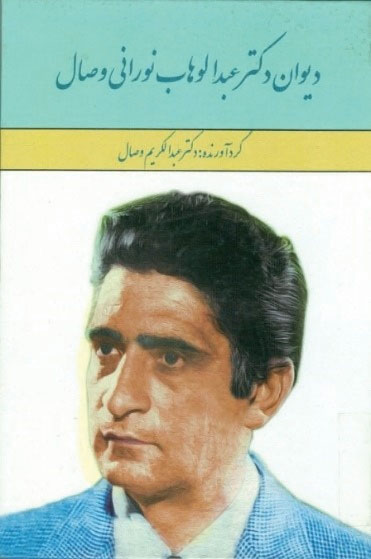
Figure 10.
Dr. Nourani Vessal’s Book.
.
Dr. Nourani Vessal’s Book.
In 2015, the “Eastern Mediterranean Medical Editors Association” (EMAME) held a conference in Shiraz in which several medical editors, including Professor Vessal, were honored as “Distinguished Editor” of the region.5The secret of Professor Vessal’s scientific success, as he said in an interview with Sepid Newspaper in 2016, was, “I loved the university and my students, and I always stayed at the university all the time.”
Finally, in order to show the intellectual background of Professor Vessal about the outstanding features of the Shiraz Medical School, a text that he wrote in October 2012, as a preface to the book entitled “A Collection of Essays on the History of Shiraz Medical School” is presented. He wrote, “The Iranian civilization has long been an important and influential civilization. The peak of the country’s scientific prosperity during the Sassanid era coincided with the rise of Jundishapur, the largest ancient medical center in the civilized world, which marked a turning point in the development of medical knowledge and education.
Throughout history, the city of Shiraz, due to its privileged position and natural attractions, was not only the center of poetry and literature, but also played a major and constructive role in the continuation of medical schools establishment. Shiraz was the birthplace of great scientists and physicians who dramatically expanded medical knowledge. Among them, we can name “Abu Maher School”, whose writings were written by his prominent student “Ali Ibn Abbas Majusi Ahwazi” the author of “Kamel Al-Sana’a” along with “ Ibn Sina’s works and “Al-Hawi” of Razi, together with the Hippocratic and Galenic texts were the basic references of the first European medical universities. Scientific and medical schools in Shiraz continued by the famous polymath “Qutbuddin Shirazi” in the fourth century AH, and after him, the “Mansouri family” in the seventh century AH, each of which testifies to the validity of the scientific development of this city. In the contemporary period, the new Shiraz University was founded shortly after the Second World War with the establishment of the Faculty of Medicine, and in a short time, it was able to be among the advanced centers with international standards. The establishment of Namazi Hospital, which in its time benefited from the latest medical facilities and prominent international professors, was also a scientific support for the clinical sciences of the new university. One of the outstanding features of Shiraz Medical School is the establishment of the full-time system. The recruitment of a new wave of professionals, mostly selected from reputable centers in the United States and serving the university full-time and in a short period of time, the fruitful effects of this movement became apparent in such a way that Shiraz Medical School became one of the centers with the scientific name of the region and even the world, and was scientifically accepted by many scholars around the world. The new generation of the faculty was able to gain the approval and respect of students and patients, and with scientific and social satisfaction, created more motivation to be present in the workplace. This trend reached its peak during the tenure of Dr. Khosrow Nasr. Shortly afterwards, with the arrival of Dr. Faramarz Ismail Beigi and Dr. Asghar Rastegar and other professors, a new force was formed and the valuable services of the recent group formed the medical educational structure of Shiraz in a new format that today, after years, Shiraz Medical School enjoys an advantaged position in the country and the region” [1].6
Finally, Dr. Vessal, after enduring a period of illness, passed away in Shiraz in the evening of February 18. On Monday morning, he was buried in his family tomb, near his father’s grave, close to Hafez Tomb in Shiraz on February 20, 2022. He was an honorable, benevolent and kind human being who loved beauty and truth. We extend our sincere condolences to his respected family, friends and colleagues. His memory will be always alive in the heart of Shiraz medical graduates and his colleagues.
Conflict of Interest Disclosures
The authors declare that they have no conflict of interest.
Ethical Statement
Not applicable.
Endnotes
[1] A few years ago, Professor Abdulkarim Vessal kindly gave the author (MHA), a number of his scanned old photographs, and diplomas along with a copy of the Dr. Nourani Vessal’s book, some of which appear in the current paper.
References
- Tavousi. M. Khandan-e Chahar Sad Sal-ye Vessal Shirazi [in Persian], A Collection of Essays in the Honor of Dr. Abdul-Karim Vessal. Tehran: Academy of Medical Sciences of I.R. Iran; 2008. p. 13-44.
- Browne EG. A Literary History of Persia translated into Persian by Dr. Bahram Meghdadi. Tehran: Entesharat-e Morvarid; 2000. p. 265-6.
- Azizi MH, Bahadori M. A Look at the Life and Career of Dr. Karim Vessal: The Professor of Shiraz Medical School and a Pioneer in Medical Journalism. Acta Medica Iranica 2018; 56(11):688-90. [ Google Scholar]
- The Bulletin News of Academy of Medical Sciences of I.R. 2006:4:7-8.
- Jawaid SA. Proceedings of EMMJ6 Medical Journals Conference held at Shiraz Iran (February 18-20, 2015). Pak J Med Sci. 2015:31:727-36.
- Azizi MH (complier). A Collection of Essays on the History of Shiraz Medical School, Vol. 2, Preface. Tehran: Mir Mah Publication; 2012.